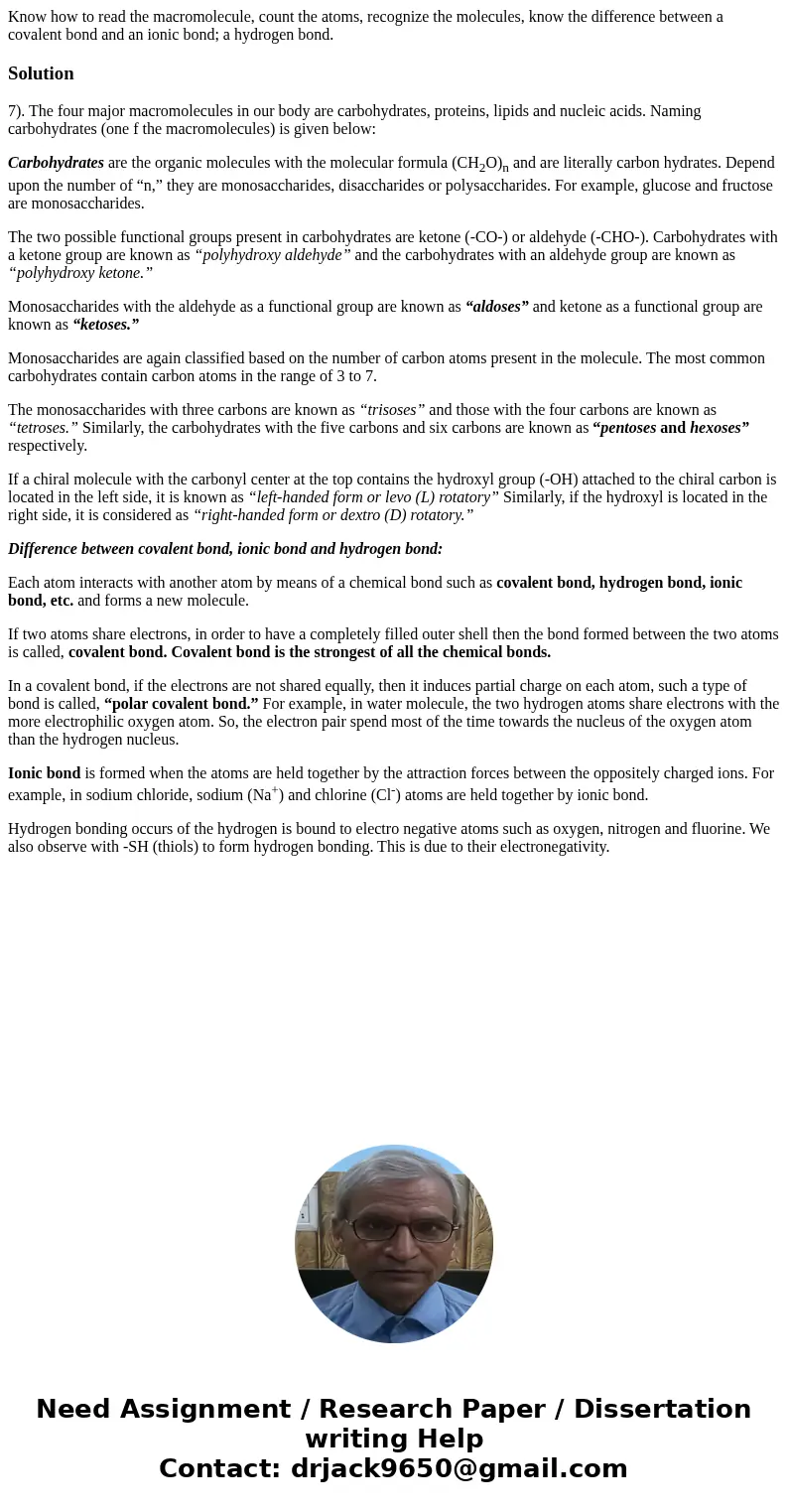Know how to read the macromolecule count the atoms recognize
Solution
7). The four major macromolecules in our body are carbohydrates, proteins, lipids and nucleic acids. Naming carbohydrates (one f the macromolecules) is given below:
Carbohydrates are the organic molecules with the molecular formula (CH2O)n and are literally carbon hydrates. Depend upon the number of “n,” they are monosaccharides, disaccharides or polysaccharides. For example, glucose and fructose are monosaccharides.
The two possible functional groups present in carbohydrates are ketone (-CO-) or aldehyde (-CHO-). Carbohydrates with a ketone group are known as “polyhydroxy aldehyde” and the carbohydrates with an aldehyde group are known as “polyhydroxy ketone.”
Monosaccharides with the aldehyde as a functional group are known as “aldoses” and ketone as a functional group are known as “ketoses.”
Monosaccharides are again classified based on the number of carbon atoms present in the molecule. The most common carbohydrates contain carbon atoms in the range of 3 to 7.
The monosaccharides with three carbons are known as “trisoses” and those with the four carbons are known as “tetroses.” Similarly, the carbohydrates with the five carbons and six carbons are known as “pentoses and hexoses” respectively.
If a chiral molecule with the carbonyl center at the top contains the hydroxyl group (-OH) attached to the chiral carbon is located in the left side, it is known as “left-handed form or levo (L) rotatory” Similarly, if the hydroxyl is located in the right side, it is considered as “right-handed form or dextro (D) rotatory.”
Difference between covalent bond, ionic bond and hydrogen bond:
Each atom interacts with another atom by means of a chemical bond such as covalent bond, hydrogen bond, ionic bond, etc. and forms a new molecule.
If two atoms share electrons, in order to have a completely filled outer shell then the bond formed between the two atoms is called, covalent bond. Covalent bond is the strongest of all the chemical bonds.
In a covalent bond, if the electrons are not shared equally, then it induces partial charge on each atom, such a type of bond is called, “polar covalent bond.” For example, in water molecule, the two hydrogen atoms share electrons with the more electrophilic oxygen atom. So, the electron pair spend most of the time towards the nucleus of the oxygen atom than the hydrogen nucleus.
Ionic bond is formed when the atoms are held together by the attraction forces between the oppositely charged ions. For example, in sodium chloride, sodium (Na+) and chlorine (Cl-) atoms are held together by ionic bond.
Hydrogen bonding occurs of the hydrogen is bound to electro negative atoms such as oxygen, nitrogen and fluorine. We also observe with -SH (thiols) to form hydrogen bonding. This is due to their electronegativity.

 Homework Sourse
Homework Sourse